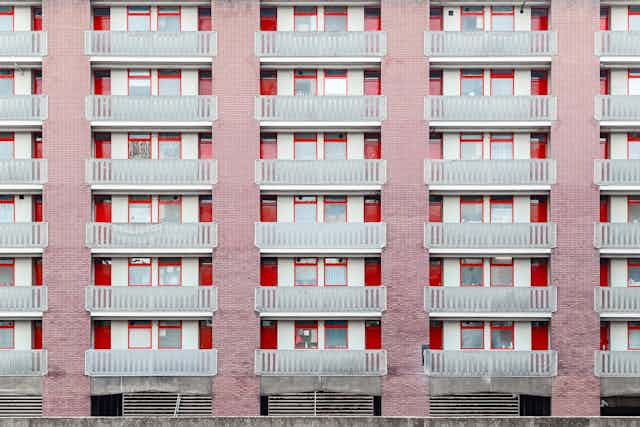In 2020 a coroner’s court in Rochdale found that two-year-old Awaab Ishak had died as a result of living in a mould-infested home. New housing standards, devised as part of the social housing regulation bill in response to this tragedy, are now set to come into force in England.
From April 1 2024, all social housing providers in England will have to ensure their tenants’ safety by keeping apprised of the conditions of the homes they let and the needs of the people they house. They will have to listen to complaints and respond within strict time frames, particularly, under the section dubbed “Awaab’s law”, to problems of mould and damp.
This will improve the lives of thousands living in social housing. However, like many reactive policies, it only addresses one part of a much wider problem. Elsewhere in the housing and planning system, the government is cutting regulations to speed up house building, a process that the Labour party wants to accelerate.
Health is often forgotten about in housing policies. Amid the clamour for economic growth, house building targets and reducing bureaucracy, housing quality and tenant wellbeing take a back seat. Regulations and standards are often derided as unnecessary red tape, but they can perform a vital role in protecting health. For residents who live in poor-quality housing, the consequences can be severe.
Our research on health and housing shows that these new regulations do not go far enough. The next UK government needs a comprehensive healthy-homes strategy, a move championed by the Town and County Planning Association. This would prevent tragedy, transform the lives of many tenants and have significant economic benefits.
Living with damp and mould
The new social housing standards are part of a suite of reforms aiming to ensure that all tenants have decent, safe and secure homes. Awaab’s law sets requirements on social landlords to quickly investigate and repair hazardous conditions in the home such as damp and mould.
This is important. Around 1 million homes in the UK have a problem with damp. Research shows this can cause respiratory conditions – which can be critical – such as asthma and can damage mental health. In England, residents in an estimated 75,000 homes experience conditions so serious they are judged to pose an immediate risk to health and safety.
The UK government’s commitment to improving the quality of social housing is to be commended. However, it is striking that the government were only moved into action after a court inquest into the tragic death of a young child.

One obvious problem with this reactive mode is many important injustices and policy failings go unnoticed. It also means that when reforms do come, they only address one part of a much greater problem.
Damp and mould doesn’t just affect people in social housing. It’s actually a bigger problem in the private rented sector, where an estimated 9% of homes are affected by damp, compared to 5% in social housing.
The lack of security for many private sector tenants and the fear of eviction means they are also less likely to report mould or damp.
Making homes healthy
Damp and mould are not the only problem. There are many other ways that poor housing quality can have important health consequences. Over 4,500 deaths in England in 2022 were linked to homes overheating. Older people, young children and people with underlying health conditions are the most at risk from extreme heat and the greatest burden falls on poorer households.
Climate change will only intensify these problems. However, the UK is not well prepared. Research by the Committee on Climate Change has revealed that 55% of the housing stock in England is currently at risk of overheating. However, that number is likely to increase to 90% of homes with a 2°C rise in temperatures, an estimate well within the range of likely scenarios.
Regulations introduced in 2021 to prevent overheating only affect new homes. They will not protect the majority who live in older properties.
If these problems are to be solved, a piecemeal approach that reacts to specific high-profile cases is insufficient. Instead, the UK needs a comprehensive healthy homes strategy that addresses not just damp and overheating, but also overcrowding, noise pollution and indoor air pollution, all of which have important health consequences. It must regulate not just the social housing sector, but also housebuilders and private landlords.
With the Conservatives’ “mission to level up life expectancy” and Labour’s “prevention first revolution”, both parties have ambitious targets on health. But neither plan will succeed without facing up to the shocking health consequences of squalid housing in the UK.

